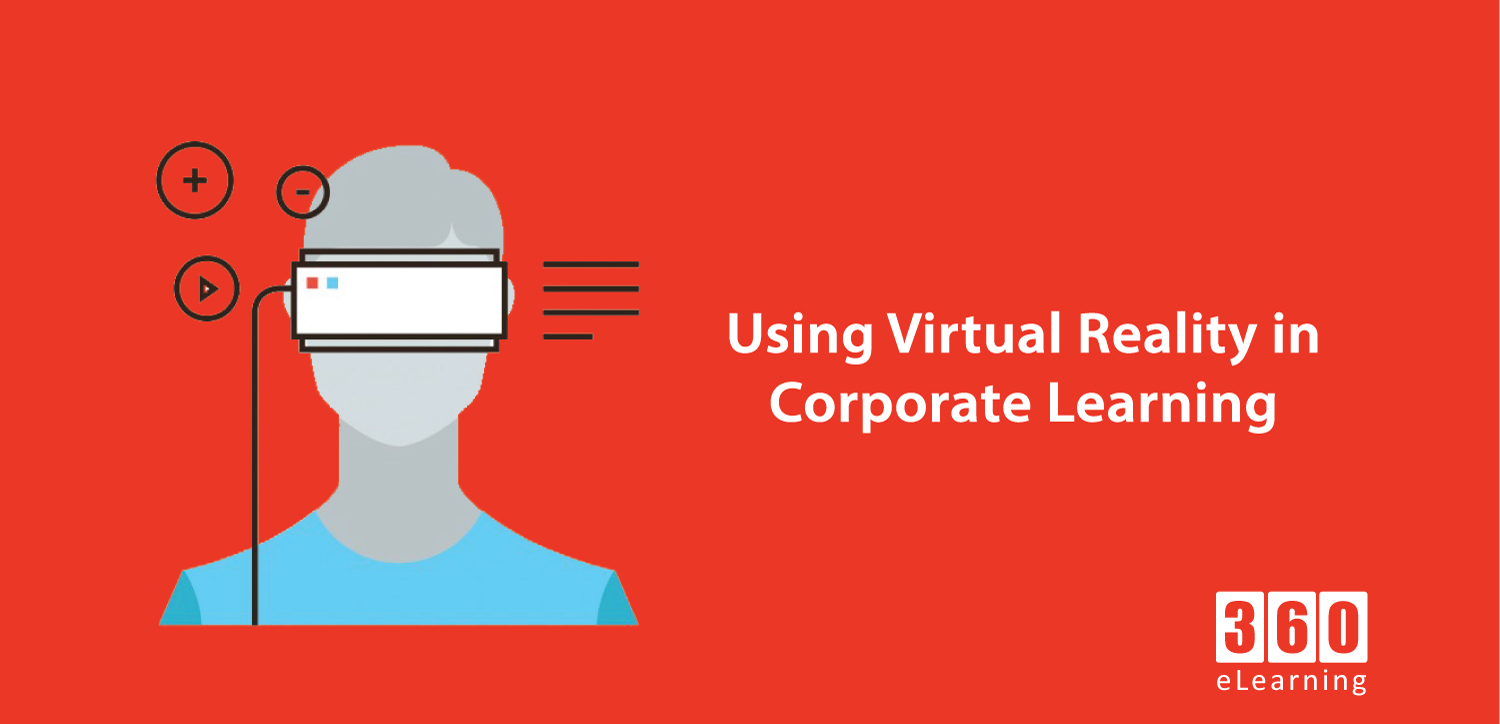Virtual reality (VR) mostly refers to computer technologies that use software + hardware to generate the realistic images, scene, sounds and other sensations that can replicate a real time environment (or create an imaginary environment). The definition of virtual reality comes from the definitions for both ‘virtual’ and ‘reality’. The definition of ‘virtual’ is near and reality is what we experience as human beings. So the term ‘virtual reality’ basically means ‘near-reality’. This could, of course, mean anything but it usually refers to a specific type of reality emulation.
A person using virtual reality equipment is able to “look around” the artificial world, move about in it and interact with features or items that are depicted on a screen or in goggles. Most 2016-era virtual realities are displayed either on a computer monitor, a projector screen, or with a virtual reality headset (also called head-mounted display or HMD).
Virtual Reality and Corporate Learning:
Companies spend more than $130 billon on training and development worldwide, yet struggle to provide a modern online learning experience. At the same time, traditional employee training is being revolutionized by flipped classrooms, learning-centric models, an explosion of content delivered over a variety of new online and mobile platforms and the latest technologies like virtual reality.
Imagine if a technology came along that allowed your employee to transport themselves to any time or place, real or imagined. Imagine if this technology could be used to create a “flight simulator” for any skill, where worker could practice and learn under the same conditions where they will use their skills. And imagine if this technology could also allow worker to step into the shoes of a customer or a colleague of different gender, ethnicity, or culture. That technology is here. It’s virtual reality.
The world you experience when you strap on a virtual reality (VR) headset might be virtual, but the learning results are real. Football quarterbacks have seen decision-making skills improve by 30 percent. Fear of public speaking has been reduced by 20 percent. Unconscious bias has been reduced in study after study. All after just a few sessions in virtual reality.
Types of Virtual Reality in Corporate Learning
- Medical training/surgery simulation
- Architectural walkthroughs
- Historical re-enactments
- Reconstructions
- Emergency services, e.g. paramedic training
- Combat training
- Customer Dealing / CSR
These are just some of the many applications for virtual reality training which are using corporate sector and increasing over time.
To use virtual reality in corporate learning and development, organizations are required to purchase smartphones and virtual reality headsets – ranging from the budget to quite pricey. Responsive content is then created to be used on the smartphones and when employees hold the devices to their faces with the headsets, a unique 3D experience is created to allow them to engage with the eLearning. We are exploring some of the benefits and drawbacks of using virtual reality technology as part of learning and development strategy in corporate sector.
Strengths of Virtual Reality in Corporate Learning
- Able to simulate dangerous or risky situations within a controlled environment.
- Accurate and realistic simulations
- Visualization of complex concepts and theories
- Ensures that learning is fun and enjoyable where appropriate
- Immersive
- Engaging
- No distractions
- Experience
- Stronger memories & recall
- Simulation
- Free to fail
- Empathy
Weaknesses of Virtual Reality
- Not suitable for all
- Motion sickness
- Astigmatism
- Quality is expensive
- No standards
- Limited content
- Bulky headsets
- “no hands”
VR’s future:
- VR is here to stay, But will take a few years to become mainstream
- Apple still haven’t announced a VR platform
- 5G mobile networks are being designed with VR in mind
- User-friendly non-coding content authoring software needed to be developed
- Web Virtual Reality is strongly recommended for cooperate learning.
Conclusion:
- VR has huge potential for learning. It creates engagement, interest and even long term recall after several months
- Experience gives insight. There’s no substitute for experiencing VR for yourself – you can’t describe it. Watch out for others who talk about VR without experience
- VR is still an emerging technology. No open VR standards beware VR vendor’s walled gardens
- Graphics are the most expensive part of creation. To reduce costs, try to minimize scenes or reuse scenes. Alternatively use a photosphere
- Quality and Design still rule. VR isn’t suitable for everything. Storyboard and design content VR isn’t the magic bullet: poor content is still poor content in VR
- VR doesn’t sell itself. It still needs promotion. Don’t just mail out google cardboards with a QR code and expect people to run with it. Don’t get caught up in own excitement
- Think about distribution channels. This isn’t HTML5 It’s not as easy as mobile learning VR content is more similar to native apps and vendor specific


